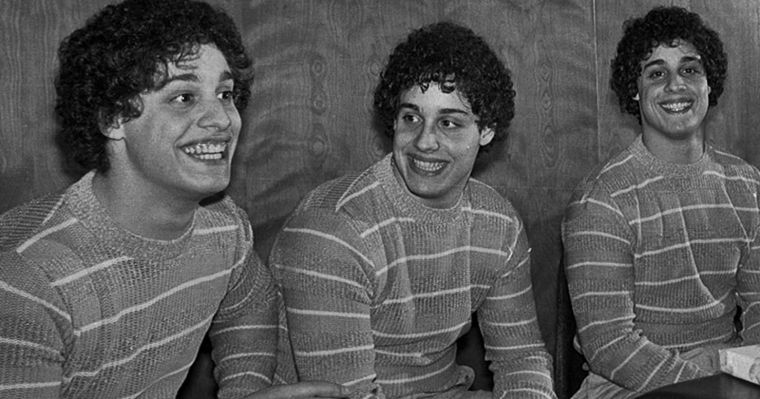3 min to read
Three Identical Strangers
What a bizzare, fascinating, and peculiar documentary Three Identical Strangers is.
by Zach Saul

What a bizzare, fascinating, and peculiar documentary Three Identical Strangers is. Much like the boys themselves I didn’t question how and why three people could be long lost siblings until the movie’s investigation begun, and what a wild ride that turned out to be. There was clearly an almost cosmic energy that the twins shared when they entered a room together, that was impressive and mystifying at the same time. The way their hips moved, their hands, even their shared appreciation of older women seemed supernatural. Even their families had an instant unexplained connection, as the documentary portrays them bonding and presenting a united front against Louise Wise adoption agency almost immediately.
The most fascinating, and underexplored part of these triplets was their celebrity. To be 19 and having alcohol delivered to your apartment, be on the cover of magazines, and on talk shows every other weekend must have had profound psychological effects on them. There are some exceptions, but in 2018 we have a good deal of evidence that being a child star doesn’t exactly improve your chances of having great mental health into your adult years. As great as things seemed early on, you got the sense they were leaning into their similarities and glossing over their differences as a cash grab. It’s easy to be a little judgmental of their behavior, but most people in their position would have done the exact same thing at 19.
What this movie means for psychology’s troubled history is a really interesting question given some of the news that has come out in 2018 about the Stanford Prison Experiments, and other landmark psychology phenomenons. It seems pretty clear that in the 50s and 60s the ethical lines just hadn’t been drawn yet, and I’m inclined to believe the researchers interviewed in Three Identical Strangers about that. That being said It was without a doubt irresponsible and deeply shortsighted for these researchers to separate triplets at birth with no regard for their longitudinal wellbeing. My only fear is that in the age of fake news, and shifting truths conspiracy theorists will hold up what happened to these twins as a reason not to trust scientists, and psychology at large.
The story of Bobby, Eddy, and David is so rich and complex it must have been a challenge for director Tim Wardle to decide what to cover, and how to distribute his two hours, but enough is left on the bone that a sequel or follow-up documentary seems immanent.
The Good: This is a story that carries itself, and needs very little help from the director to be riveting. There are multiple big reveals, and director Tim Wardle withholds the right amount of information early on as not to spoil them. Also to Wardle’s credit, he gave ample time and energy to explore the researchers’ perspective and got some compelling interviews to balance out the doc.
The Bad: There are times when Three Identical Strangers gets a little heavy handed. The nature versus nurture angle is interesting, but that’s a conclusion I’d have rather reached on my own without the movie holding my hand. The first twenty or so minutes where they are discovering each other are admittedly intentional (so as not to reveal there’s a missing twin) but also quite boring. Thankfully the rest of the movie more than makes up for the early doldrums.
| Movie Details | |||||
|---|---|---|---|---|---|
| Studio: | |||||
| Director: | Tim Wardle | ||||
| Written By: | |||||
| Staring: | Eddy Galland | David Kellman | Robert Shafran | ||

Comments